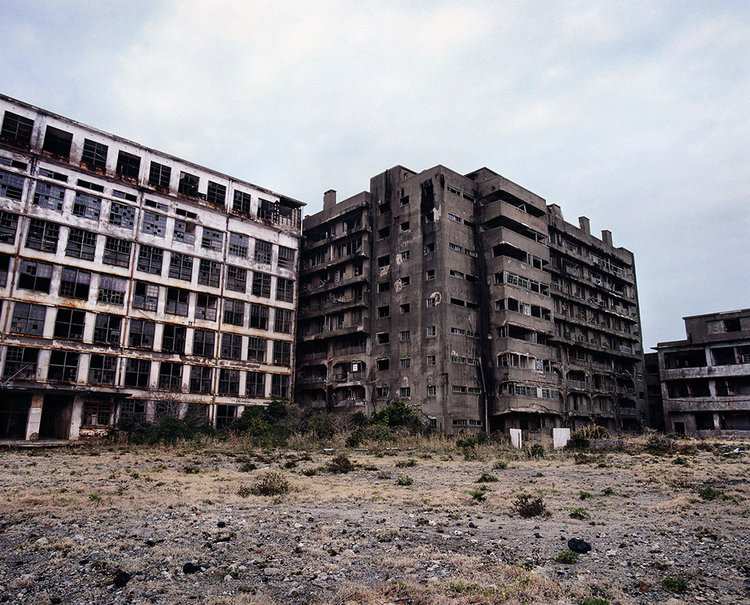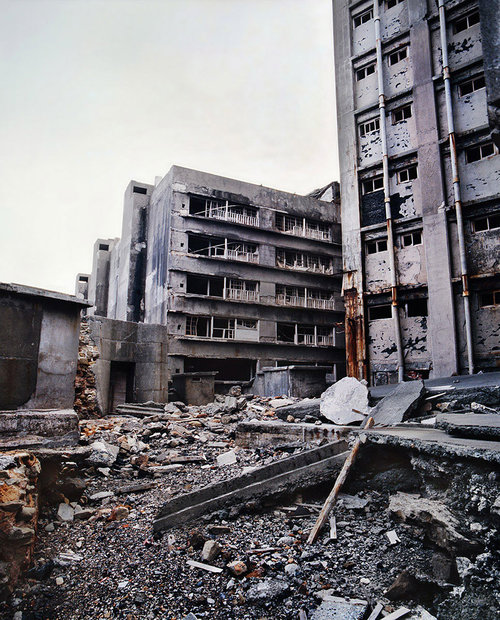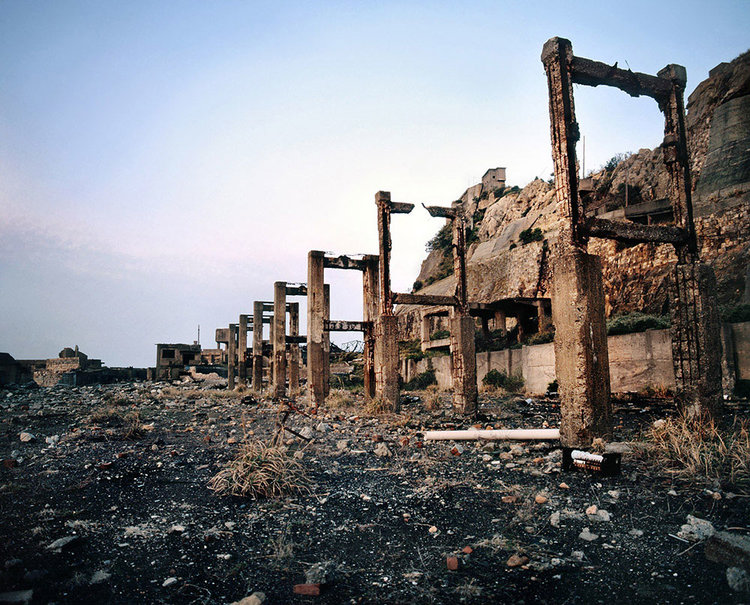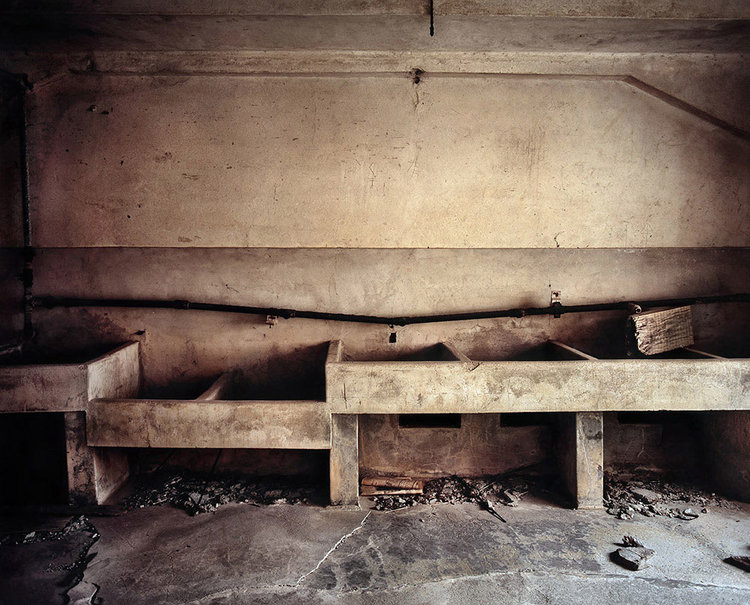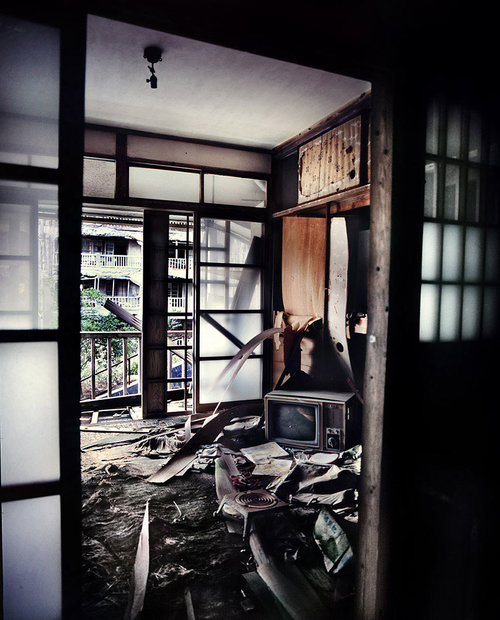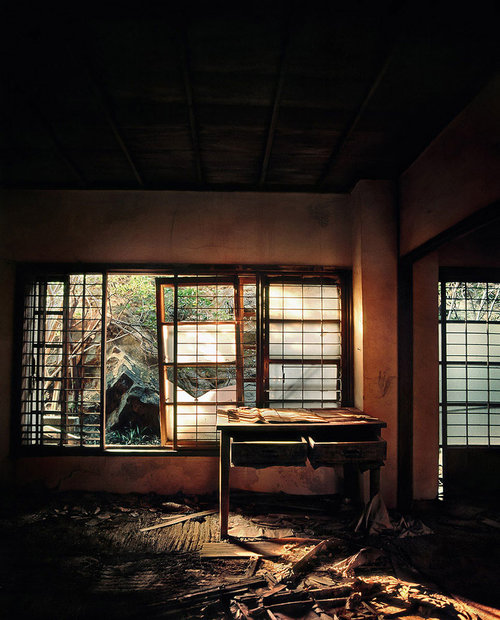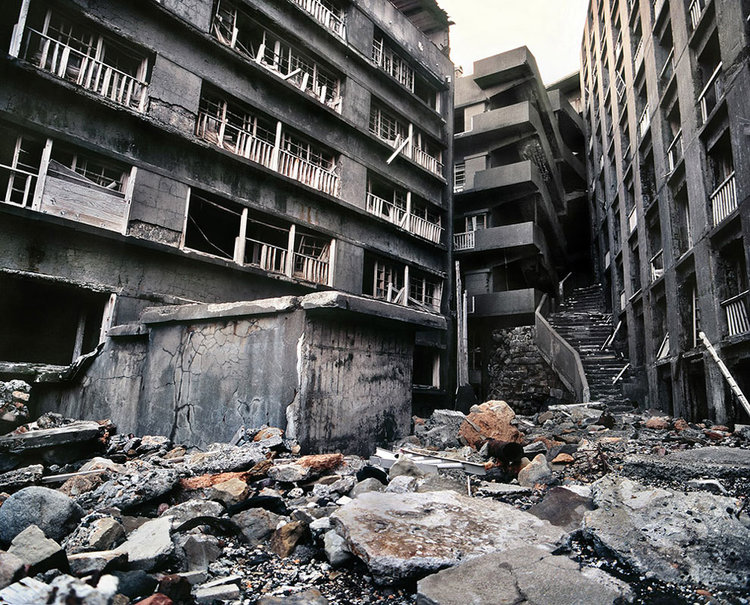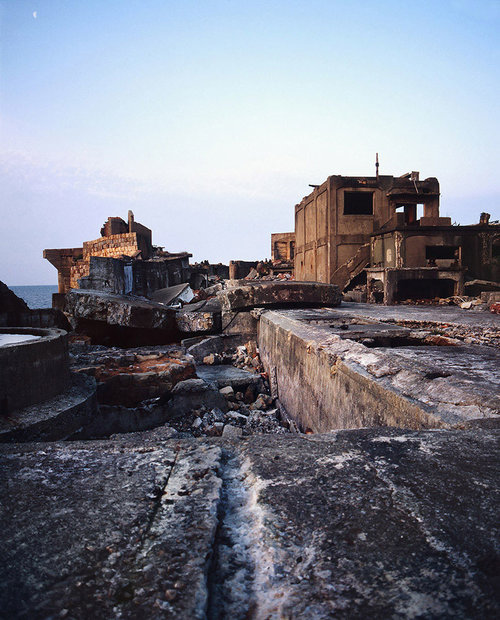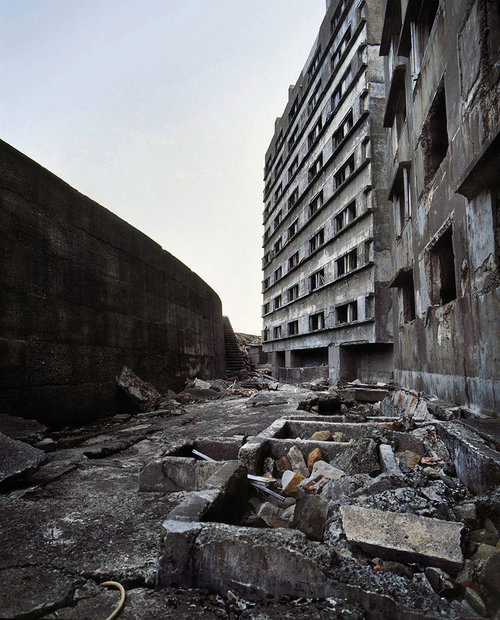HASHIMA (GUNKANJIMA)
BY SÉBASTIEN TIXIER
Born in 1980 in a small town in central France, Sebastien Tixier now lives and works in Paris.
Trained as an engineer, but fascinated by his father’s camera during his childhood, he finally became a self-taught independent photographer in 2007. His work ranges from staged studio photographs to landscapes and documentaries on globalisation and its impacts – culture, environment. His photographs have been awarded numerous prizes and been exhibited in festivals and galleries across Europe.
synopsis
The Japanese island of Hashima, also known as Gunkanjima (or “war vessel”) because of its shape, falls under the Nagasaki Prefecture in Japan. Used for quarrying coal, the island experienced extremely dense urbanisation accompanied by the highest population density rate ever recorded worldwide at that time. When the coal mines closed in 1974, the island watched as its inhabitants suddenly departed, leaving it to abandon and desolation. Contrary to most deserted places, the island of Hashima bears no traces of human life following its brutal abandon. No graffiti or signs of destruction wreaked by Man exist: the Hashima of today has been shaped by the elements and the passage of time alone. Picking my way among the ruins, isolated in the middle of the ocean, and the fragments of the lives of men, women and children, one are struck by the island’s silence. A meditation about the impacts of industrial decisions on the lives of many.
editor's note
Our aim is to disseminate and bring to light telling work of emergent or young photographers.


